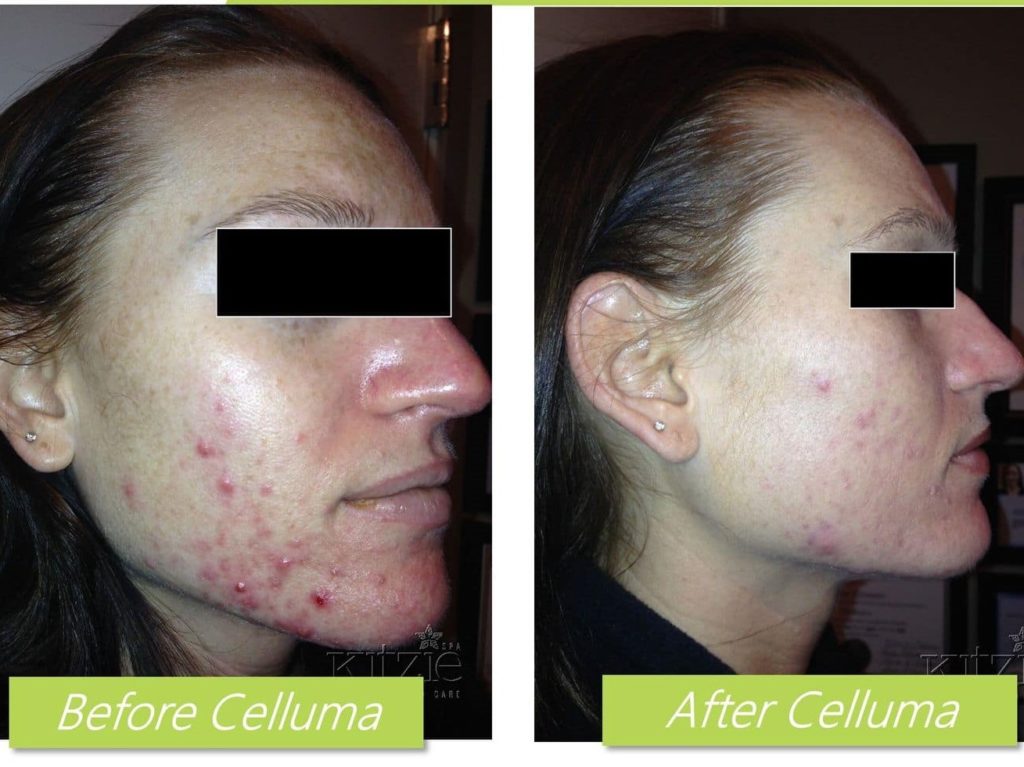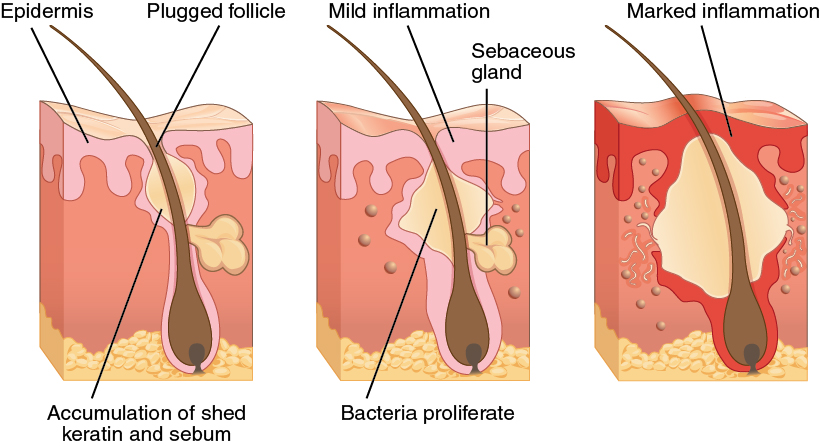Blackheads
Within our follicle come hair and sebaceous (oil) glands. When the oil fills the mouth of the follicle and plugs the entrance, we develop blackheads (comedones). It turns black when the oil oxidizes with UV light and turns the oil dark. Generally, there is no infection happening so it is not a problem.
Pimples
The next scenario is when there is a blockage a little further down the follicle. When we get a blockage here, we stop oxygen from being able to get into the area causing an anaerobic environment.
When this happens there is an acne bacteria called ‘p-bacteria’, the main culprit for acne. P-bacteria thrives in an anaerobic environment causing an infection. White blood cells come to the area to fight the infection of redness, pain, and swelling creating white puss on the surface.
Generally, these conditions heal on their own by the body pushing the infection out.
Cystic Acne
The next blockage is cystic-type acne where it is further down the follicle. Because it is further down the follicle the body cannot release the oil easily so it can sit there for a while, causing it to keratinize forming a hard bump. It is often painful and it takes a long time to heal. These cysts are lower down around the dermis layer where there are collagen and elastin fibers. If they are damaged from being manipulated they can cause scarring and pigmentation. Causing another problem with this type of acne.
What causes these blockages?
These blockages are called retention keratosis, a blockage from:

1. Our own dead skin cells not naturally exfoliating;
2. Improper ingredients in skincare and makeup will plug the pore. Also not removing them properly.
3. Dehydrated skin due to a loss of proper oil balance, and harsh skincare. Dehydrated skin, doesn’t naturally exfoliate. So the skin builds up and crowds the mouth of the follicle adding to the plug.
4. The quality of oil (sebum) should be healthy and free-flowing not sticky and thick. With acne and acne problems the oil becomes thick causing a plug, not allowing oxygen in.
5. The skin should have a PH of between 4.5 and 6.5 depending on your background. If we are with this range it is more acidic. When there is imbalance and more alkaline, this is the perfect environment for bacterias causing problems and risk of disorders in the skin barrier, of the epidermal enzymes, and of the microbiome.
The healthy pore needs to be free of bacteria, pathogens, and infection. Keeping the skin and follicles healthy, hydrated, and free-flowing is what we strive towards.
Let’s get on top of healthy skin and eliminate these problems. You’re worth it!

